The other day I was experimenting again, and dug out the old Sigma 105mm 2.8 macro lens, my main macro provider until it quit unexpectedly about 16 years ago (!), in two ways. The first was that autofocus got very balky, likely due to a stripped focus gear, though I have no idea how that happened. I did indeed do this on my own with another lens, by inadvertently leaning the focus ring against a post as I was steadying myself for a stable shot; on that lens, the focus ring was directly tied to the focusing elements within the lens, and moved as the autofocus motor did – unless it was prevented from doing so, in which case the focus motor gear stripped instead. Not too many lenses are built this way anymore, for exactly this reason, but it also helps that you can tweak focus to be more sharp or where you want it without having to turn off autofocus, so most manufacturers have lenses that allow this now.
The Sigma 105 had/has a push/pull focus ring – forward to disengage manual and engage autofocus, and back to reverse these, so how the focus gear could possibly have stripped by mishandling, I’ll never know, and I suspect it actually didn’t. Since I routinely used manual focus for macro work anyway, it didn’t have much impact. What did have an impact was the aperture failing, which effectively trashed the lens; you just can’t shoot macro work with that short a depth-of-field. Well out of warranty and not at a time that I could afford a lens repair, I simply set it aside and began using other means. Later on, I determined that it was probably the ribbon cable that fed electronic instructions to the aperture motor itself, which was a fairly common failure point in earlier Sigma lenses – and in at least one Canon lens, which I repaired myself. I have checked a couple of times, but I cannot locate the replacement ribbon cable for the Sigma lens, it being long discontinued now.
All that said, the lens otherwise is fine and sharp – as long as you like a permanent f2.8, which is why I dug it out again, because it has the shortest depth-of-field that I can presently manage. I have a couple other lenses that can also reach f2.8, but they’re wide angle and so the low magnification doesn’t enhance the short depth like 105mm does. The same could be said for the Olympus 50mm 1.4 that I have around here somewhere. And I wanted short depth for these experiments.

It’s not that noticeable here, actually, because I backed off a little to get more blossoms in, and because most of them are in the same plane parallel to the digital sensor (something that most macro lenses are optimized for, primarily for copy stand work.) This is the rosemary (Salvia rosmarinus) plant that hangs alongside the front door, a ‘cascading’ variety that looks good in hanging pots. It earns my attention because it’s at eye-level and thus easier to work with, and because it blooms better than the other two rosemarys we have. You can still see the short depth if you notice the bloom up top, closer to the camera, and how the rosemary leaves themselves go quickly out of focus just on the back side of the stems, to say nothing of those in the background, only a handful of centimeters further off. I can make it more distinct, though.

This is close to, but not quite, full-frame of another flower chosen for its isolation, with a portion of the brick wall peeking in behind. I chose the pistil and stamen as the focus point, and ‘point’ is the right word, as we go in tighter.

This is just about full resolution, and isn’t bad for handheld in natural light. But yes, we’re talking short focus depth, because the entire flower might be 10mm across. When it comes right down to it, there are very few uses for a focus range as short as this, regardless, especially when you have to be within a millimeter of the correct distance to even use it – not something that really should be done handheld, is what I’m saying. What f2.8 provides overall is the ability for the camera and lens to autofocus in as many circumstances as possible, getting enough light and contrast to the sensor for it to distinguish the subject tight enough – even when the shot you’re after might be flash-lit at f22.
More experiments.

The blue lobelia (Lobelia erinus) is, amazingly, still blooming heartily, though as of tonight we’ve moved it indoors, since it’s dropping down to around 5°c out there. We can see here, though, that depth this short wasn’t helping things along at all, not just isolating the flowers but isolating portions of the flowers – this might have worked if there were a specific insect I wanted to highlight, but with the flowers themselves, not at all.
A closer look:

See? It’s actually sharp, just very selectively. Too selectively. The ‘hairs’ on the edge of the petals are starting to wander out of focus. I was considering that this lens might be occasionally useful for portraiture, but first, I virtually never do portraiture, and second, this depth might actually be too short for most of those applications, even though it would be better backed off to portrait distances. Back during my wedding days, I actually used a borrowed 85mm f1.8 lens dedicated to portraiture, and at f1.8, someone’s nose could be sharp while their ears were going fuzzy (and not in an old man way.) Very large apertures rarely lend anything to their use in photos, though as I said, helping focus is no small thing.
 By the way, these were again tweaked towards more realistic color, since the original colors captured by the sensor are shown at right; it’s very weird how poorly it handles blues, though it really wasn’t until obtaining this plant that I became as aware of it as I am now. I’d noticed that deep blue skies never quite looked as good in digital as they did with films, and put it down to the richness of the film emulsions, which is true enough – I just never realized how weak CMOS sensors were in this regard. And they’re not very good at skin tones, either, something that was immediately apparent when they arrived on the scene, since I was doing that wedding work with Fuji NPS and NPH portrait films, which were fantastic in that regard. You might have a hard time finding examples of this, since what exists as online versions are primarily lomographers/hipsters using long-expired film, trying to be fartsy, but the color registers are hardly true to their original quality, and what I have available are all personal images that I do not have permission to reproduce here.
By the way, these were again tweaked towards more realistic color, since the original colors captured by the sensor are shown at right; it’s very weird how poorly it handles blues, though it really wasn’t until obtaining this plant that I became as aware of it as I am now. I’d noticed that deep blue skies never quite looked as good in digital as they did with films, and put it down to the richness of the film emulsions, which is true enough – I just never realized how weak CMOS sensors were in this regard. And they’re not very good at skin tones, either, something that was immediately apparent when they arrived on the scene, since I was doing that wedding work with Fuji NPS and NPH portrait films, which were fantastic in that regard. You might have a hard time finding examples of this, since what exists as online versions are primarily lomographers/hipsters using long-expired film, trying to be fartsy, but the color registers are hardly true to their original quality, and what I have available are all personal images that I do not have permission to reproduce here.
A couple days later I revisited the rosemary after the rain, this time with the Sigma 180mm f3.5 macro, a working aperture and a macro flash unit – this became a sorting find a few days back.

Exposure a leetle too bright here, courtesy of shooting all manual and being closer with the flash than I’d surmised, but the depth is a hell of a lot better at f14. The background darkened down a bit, notable since this was in daylight in much brighter conditions than all of the previous. But what popped this into the ‘sorting finds’ category was this, seen as we go in tight at full resolution in the center:

Wholly unintentionally, I’d caught another branch of the rosemary fairly sharply in there, matching the curve of the droplet. As you can probably tell from the full-frame version previously, I couldn’t even see that branch in there, so it was just a lucky capture, though not really good enough to do anything with. But these are the kind of things I experiment with, when I get the bug, and eventually they lead to something good. Most times, anyway – at the very least, the pitfalls or avoidable techniques are revealed, so not all bad, even when no real keepers are produced.


























































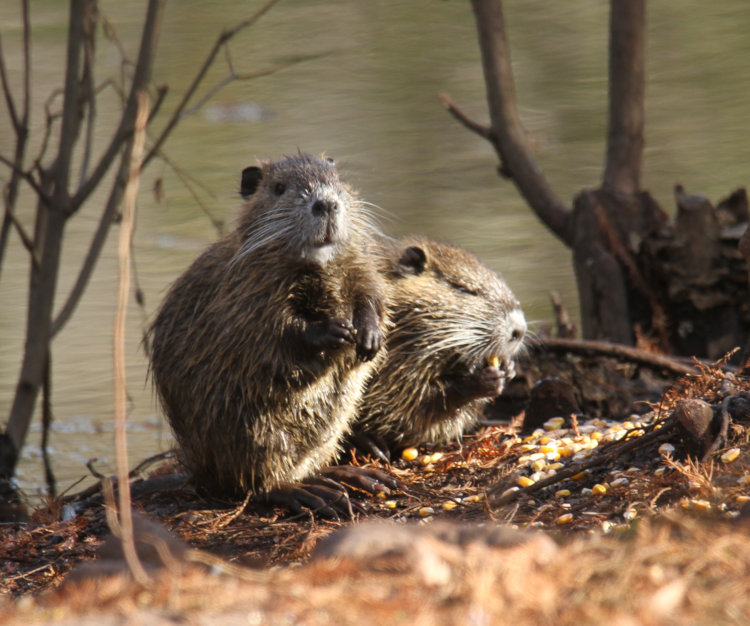
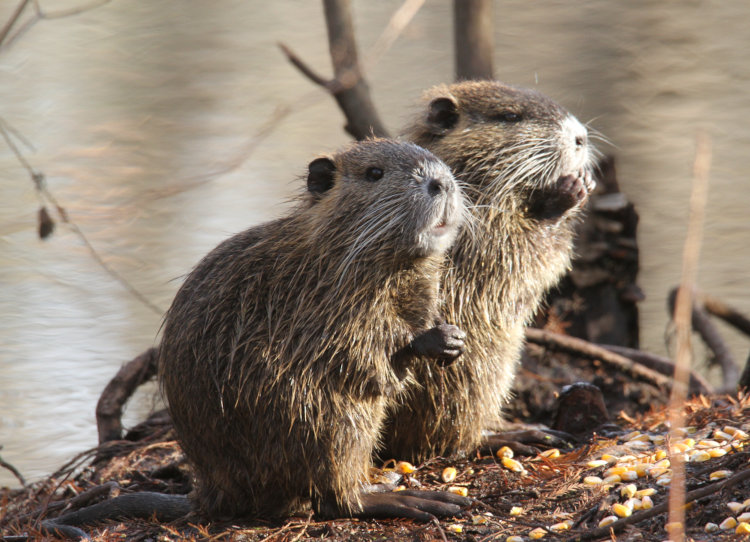
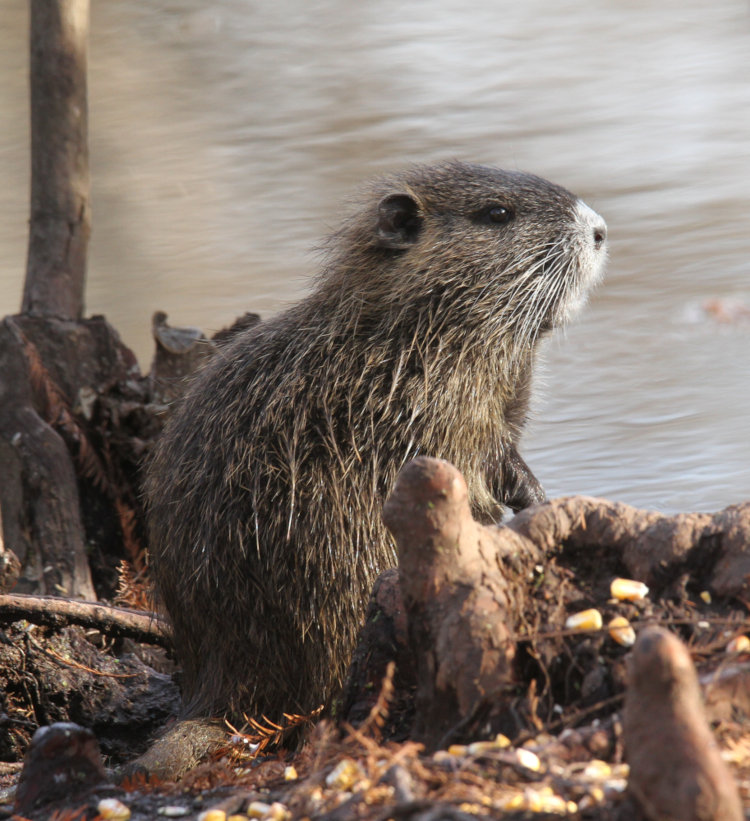
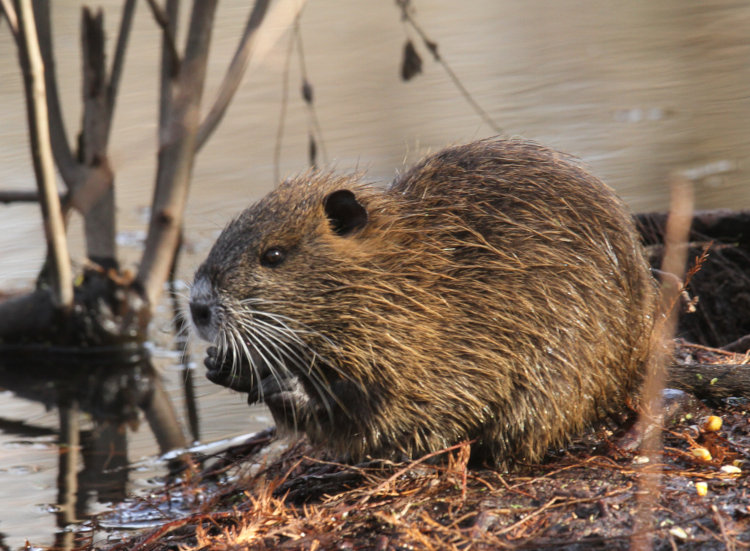
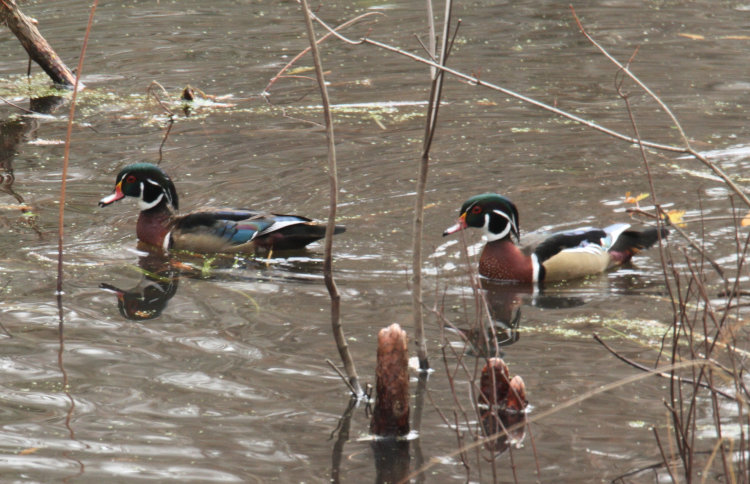
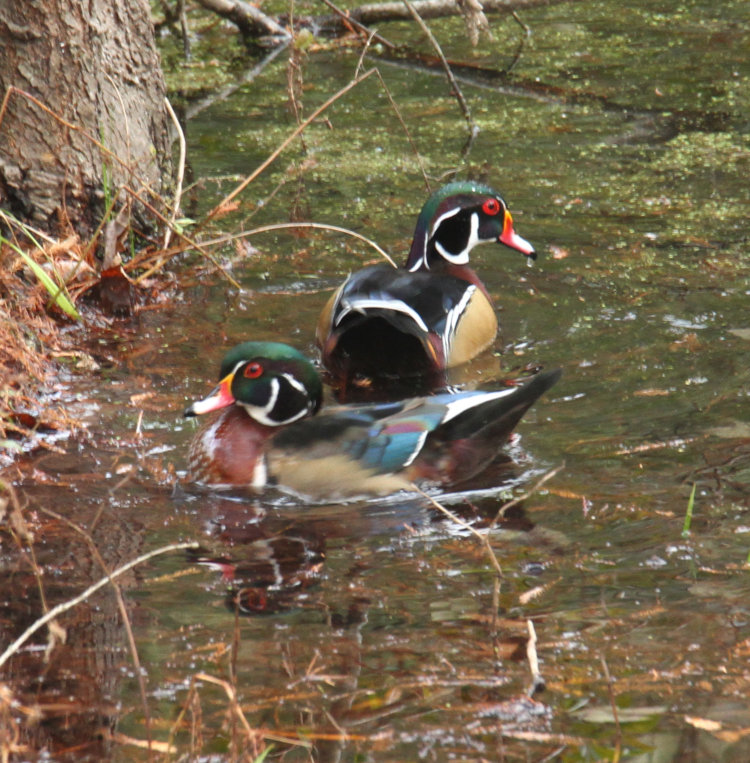
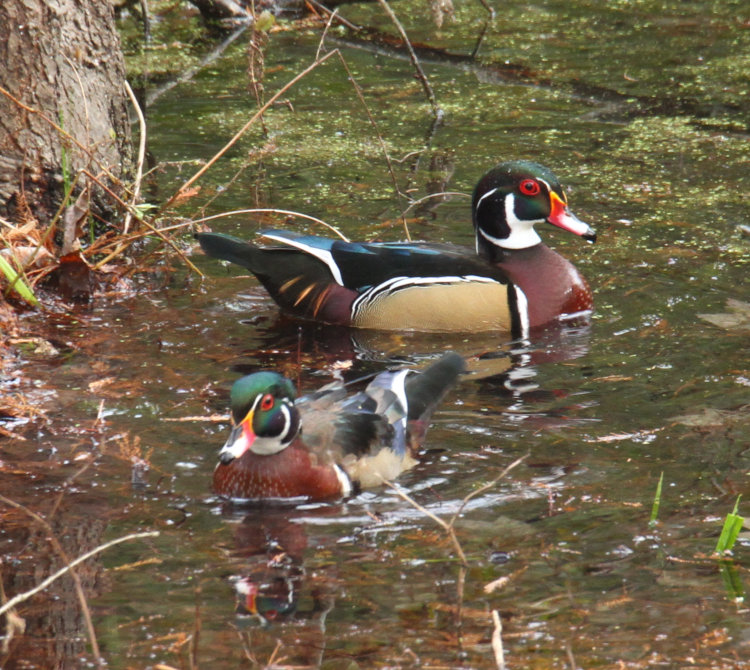
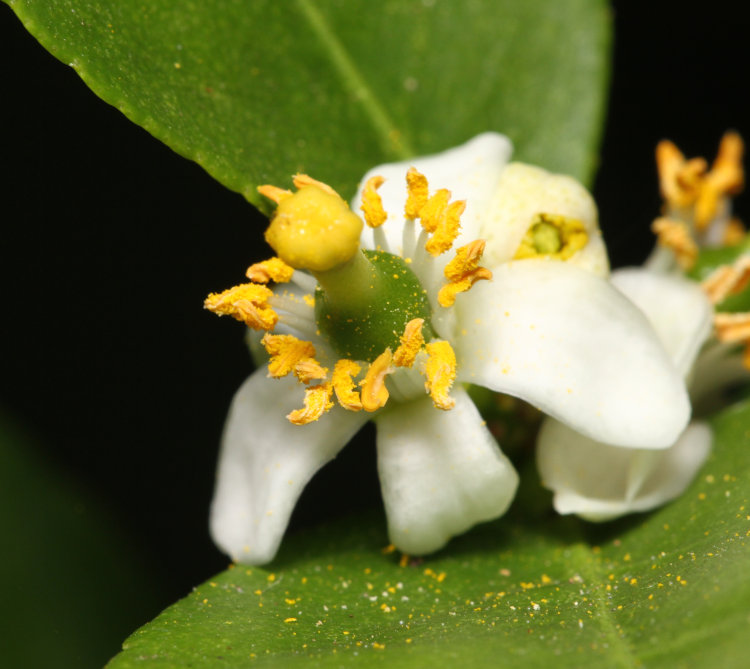
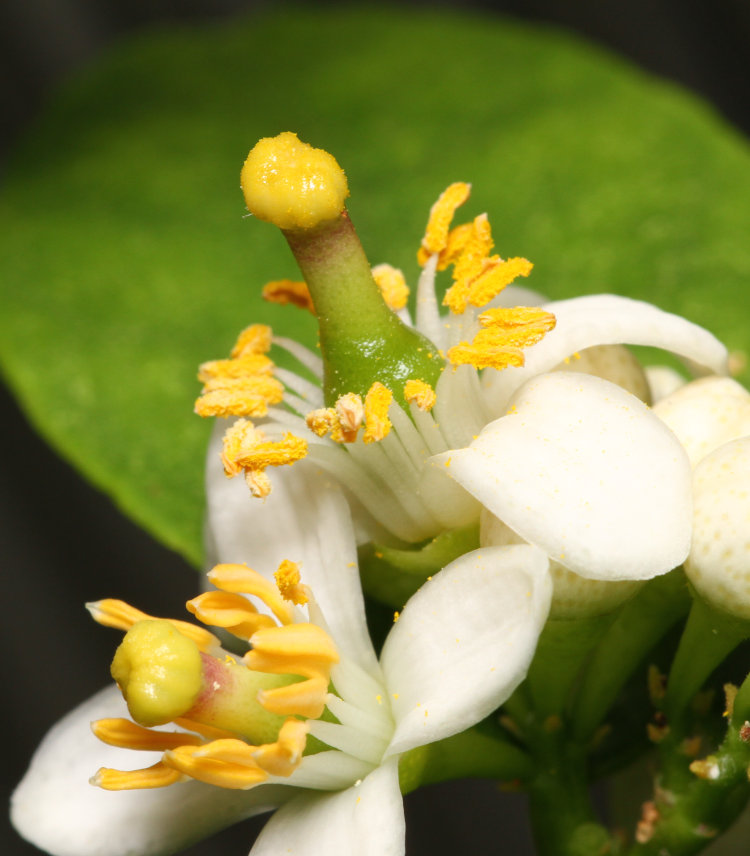
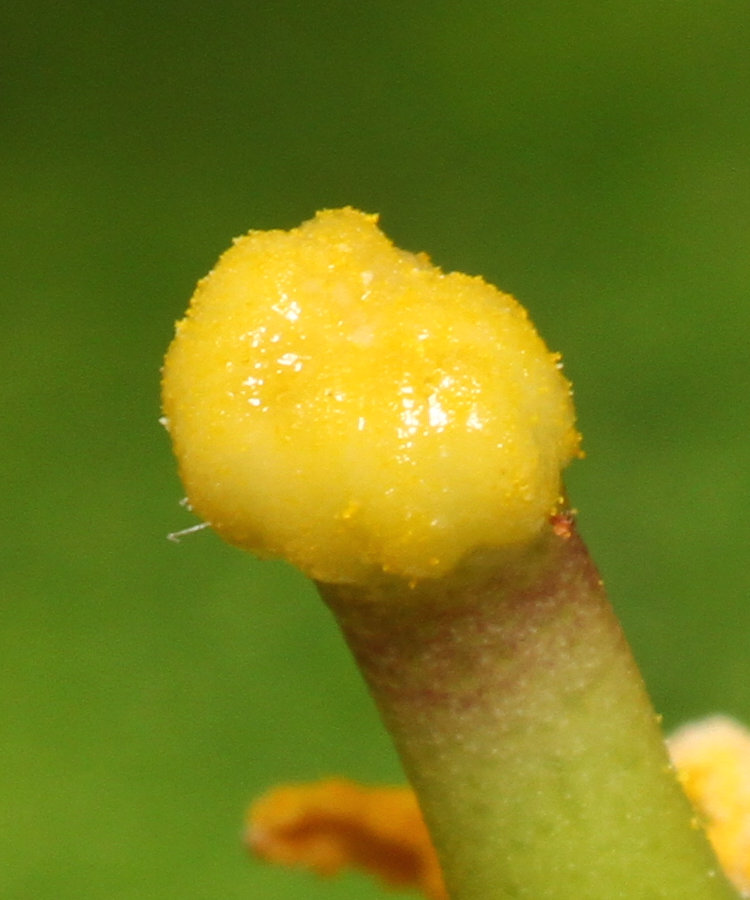















 By the way, these were again tweaked towards more realistic color, since the original colors captured by the sensor are shown at right; it’s very weird how
By the way, these were again tweaked towards more realistic color, since the original colors captured by the sensor are shown at right; it’s very weird how 


